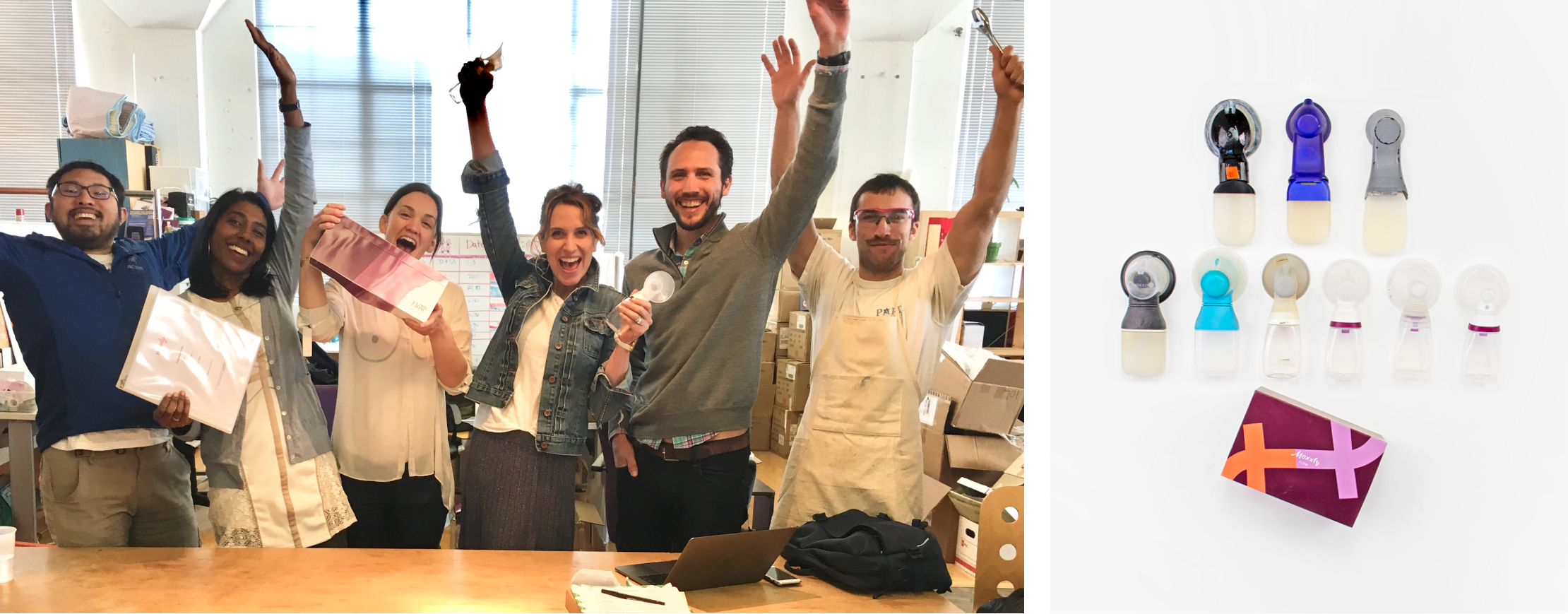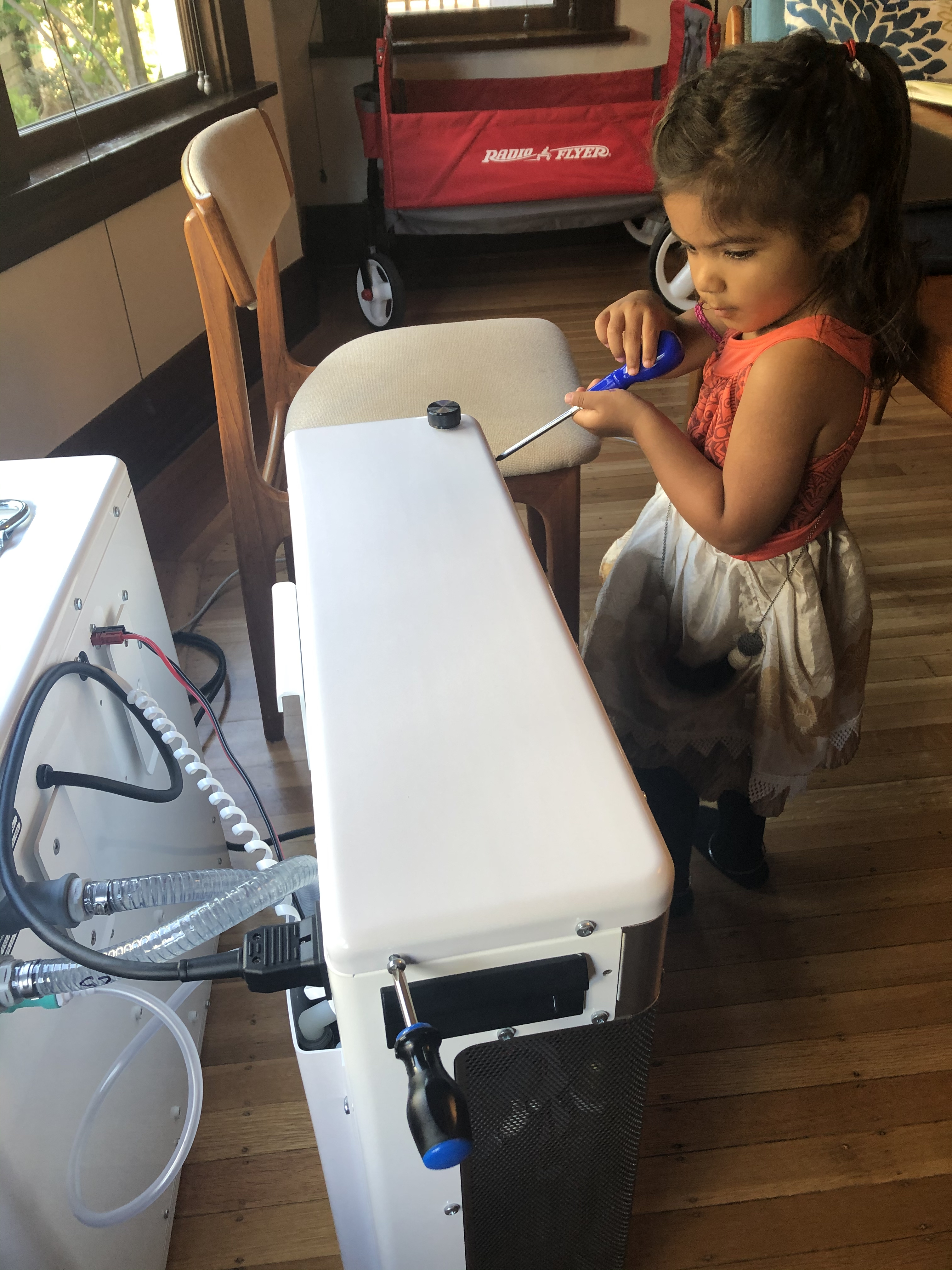Meet Santhi Analytis, Our New Venture Fellow
We’re excited to welcome Santhi Analytis, Ph.D, as Venture Fellow to our full-time team at Designer Fund. As a startup founder, engineering leader with design expertise, and angel investor, Santhi brings a deep understanding of what it takes to build exceptional products and teams from 0 to 1.
Enrique originally met Santhi through the Stanford d.school while she was completing her master's and doctorate degrees in Mechanical Engineering at Stanford University. She then co-founded and served as CTO of Moxxly, a Designer Fund portfolio company that reinvented the breast pump and was acquired in 2017 by Medela. More recently as VP of Engineering at Gradient, she led engineering and product design efforts to redesign air conditioning in homes with advanced heat pump technology, while saving space, installation costs and using a climate-friendly refrigerant. Gradient was recognized for its breakthrough product design with multiple awards including being named one of TIME’s Best Inventions of 2022 and a Fast Company World Changing Idea.
In her role as Venture Fellow on our investment team, Santhi will work closely with us over the next quarter to find exceptional founders, support due diligence, and improve our operations. Her passion for mitigating climate change, improving global health, and promoting underrepresented minorities in STEM fields aligns well with our mission.
To help introduce you to Santhi, we asked her a few questions below.
Tell us about your path into design. What was your design training at Stanford like?
From a young age, I was craftsy and artsy. I even kept a notebook of my invention ideas as a kid! But I really came into design as a career path from studying engineering. In college I became interested in designing medical devices, started a chapter of Engineering World Health, and did some needfinding interviews to build low cost medical equipment. Thinking that someday I would start my own medical device company, I moved to Silicon Valley after graduation to work at a startup which was later acquired by Boston Scientific.
Then I started getting really interested in robotics for minimally invasive surgeries. That led me to doing my graduate studies at Stanford. I got a lot of my core design thinking training from the Mechanical Engineering entrepreneurial capstone course ME310. It was a year-long project based course with industry sponsors. I also was a course assistant a couple years later and developed a curriculum to help students learn how to prototype mechatronic components with microcontrollers. I enjoyed learning a lot of tools for predicting future user behavior and technological innovation with the ME410 series. To further solidify my user-centric design skills, and to get back to my interests in solving problems for the developing world, I was involved with the d.school’s Design for Extreme Affordability. To summarize my training at Stanford, I had a lot of opportunities to learn good design methodology, as well as hardcore engineering skills (robotics, computer vision, human-computer interaction, etc.), and put them into practice.
Between industry sponsored projects with large consumer electronics companies, internships and research support from medical robotics companies, and even the odd art installation project (I built a couple mind-controlled drawing robots that moved based on brainwave activity), during my time at Stanford I learned to embody the cycle of build, test, and iterate.
During your roles as CTO at Moxxly and as VPE at Gradient, how did design have an impact on the success of the companies? What product design principles did you lean on the most to build the products?
I was at both companies from product concept into implementation. When we founded Moxxly, we had a lot of user personas and research thanks to my co-founder Gabrielle’s masters thesis. But in the beginning, we did a lot of focus sessions to get feedback on low to medium fidelity prototypes to know that we were heading in the right direction for our launch product. When I joined Gradient there was a one off alpha proof-of-concept for the saddleback DIY-installable air conditioner/heat pump, without any industrial design incorporated, nor the full functionality.

The main design principle I helped instill at these companies was that iterative process of testing with users, and generally having a rigorous verification process. If you can’t measure what you’ve built, how do you know you’ve built the right thing?
Other key design principles, besides always keeping the user point of view top of mind, include keeping it simple - i.e. focus on the MVP. You don’t want to overload a product with too many features (and added costs) before a core concept can be fully implemented. I think the Moxxly and Gradient product launches were successful because we focused on meeting the minimum needs-to-have requirements to create a delightful experience and address clear user pain points.

Why did you start angel investing? What are some of your angel investments that you’re most excited about?
I saw angel investing as a way to pay it forward to the early startup ecosystem, and to meet exceptional founders. I’ve been privileged to have the opportunity to mentor and advise some founders, especially in hard and frontier tech, on ways to get from zero to one without making mistakes I’ve experienced in the past! I’ve also been able to meet a lot of amazing co-angels and early stage investors (which again leads to meeting more exceptional founders).
Some investments I’m especially proud of in the climate and sustainability space include Vaayu, helping retailers assess their carbon footprint in real time, and Shellworks, making truly sustainable plastic alternatives. Going back to my biomedical roots, I’m also excited about iSono Health, which is developing an automatic ultrasound based breast cancer screening device. Just like improving the breast pumping experience, I want to improve the mammogram experience before I have to deal with it myself!
How does your experience as a founder influence your investing decisions?
I think from being a founder and knowing a lot of startup struggles, especially those around building deep tech and consumer products, I’ve learned a few things that help me assess companies. I definitely put a lot of weight on the founding team and their demonstrated successes. Communication among the team and openness to the state of the product/technology is also important. At an early stage, it’s definitely not expected that everything is figured out around the product-market fit, but good founders can clearly share their known and unknown unknowns, as well as the risks around what they are building. It’s a good sign when a company’s launch expectations are aligned with all the paths that are needed, including marketing, engineering, regulatory and etc. hurdles.
Why are you excited to join Designer Fund as a Venture Fellow? What are you looking forward to learning and accomplishing?
I’m excited to join Designer Fund as a Venture Fellow firstly because Enrique and Ben are amazing! I know I’ll learn a lot from them about assessing early stage tech startups and coaching founders around good user-centric design. I’m looking forward to learning more about the inner workings of venture capital, and launching our next Designer Fund Partnership application.
Where can folks learn more about you?
You can find me on LinkedIn here, and learn more about what I invest in from the ANGELS.vc directory.
Hero image by Gabrielle Guthrie